Premium Only Content
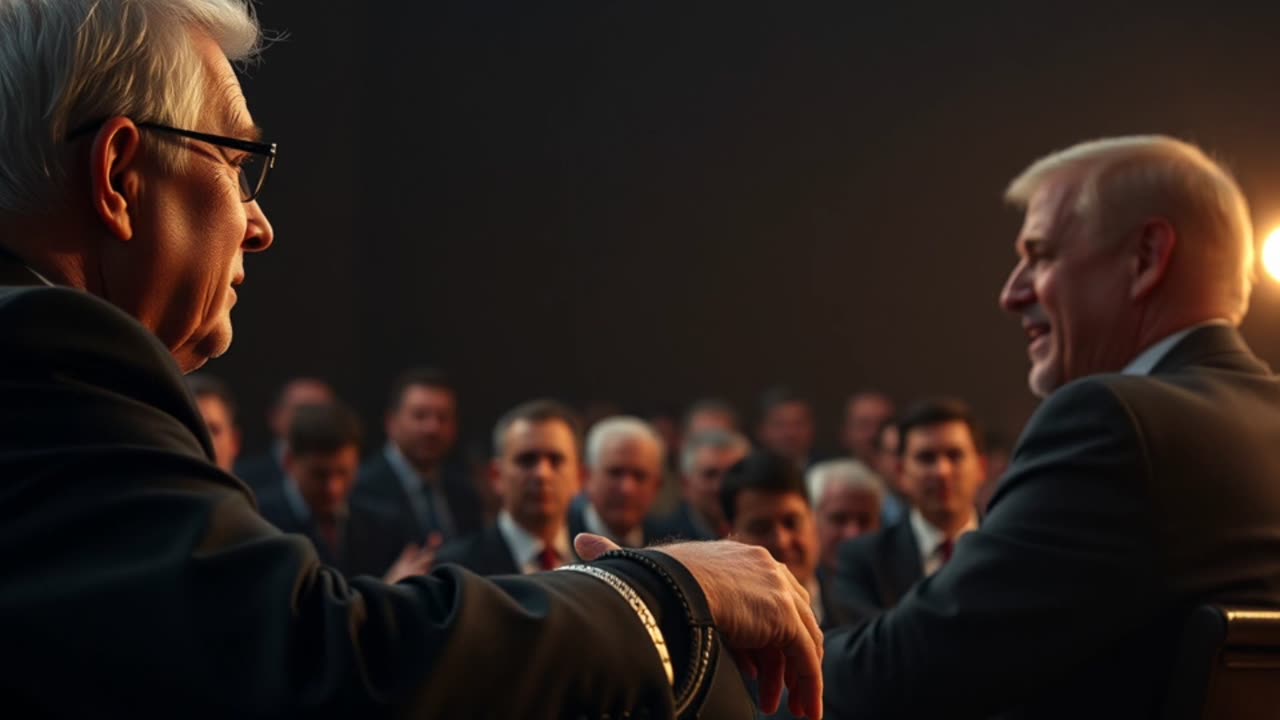
Ode to Resolve in Psalm style
Do you agree with France, UK and, Australia that the Iranian planned invasion of Israel by Hamas, siezing hostages and killing and raping innocent civilians, is worthy of statehood? Israel has for over seventy years offered peace, even offering land for security. But, now, Israel is resolved to provide security, and police, Gaza, ensuring Hamas has no role.
Make a song in ancient Jewish tradition of their Gaza objective. Include how they repeatedly offered peace to Hamas, but were spurned. Trump warned Hamas of what would happen if they failed to return the hostages. They refused. Include how UN and Europe have emboldened Hamas to not return the hostages. Include how Hamas has deliberately starved her own people to blame Israel.
Ode to Resolve: A Lament in the Style of Ancient Psalms
(In the tradition of biblical Hebrew poetry, such as the Psalms of David or the Song of Moses, this song employs parallelism, rhythmic repetition, and themes of divine justice, oppressed people, and unyielding foes. It is structured with verses (stanzas) and a refrain, evoking lamentation and resolve against adversity. Imagine it chanted with harp accompaniment, in a minor key, blending sorrow and determination.)
Verse 1: The Call for Peace Spurned
O hear, ye heavens, and give ear, O earth,
For Israel extends the olive branch once more,
Ceasefire whispers in the winds of war,
Proposals laid before the gates of strife.
Yet Hamas turns away, rejects the hand outstretched,
Demands unyielding, weapons clutched in shadow,
Peace offered, peace denied in endless night.
Though both sides falter in the dance of talks,
The cycle spins, rejection echoes loud.
Refrain: The Resolve of Zion
We stand as mountains 'gainst the raging sea,
To dismantle terror's hold, to free the bound,
Gaza's chains we seek to break with might,
Hostages returned, security reclaimed,
In the name of life, we march unbowed.
Verse 2: The Warning from Afar
From distant shores, a voice like thunder roars,
Trump speaks with fire: "Release them now, or woe!"
"Last warning given, hell shall be unleashed,"
If captives linger in the depths of dread.
Hamas defies, refuses mercy's plea,
Hostages held as shields in cruel game,
Deadlines pass like shadows in the dawn,
Yet the plea resounds: Return them home!
Refrain: The Resolve of Zion
We stand as mountains 'gainst the raging sea,
To dismantle terror's hold, to free the bound,
Gaza's chains we seek to break with might,
Hostages returned, security reclaimed,
In the name of life, we march unbowed.
Verse 3: Shadows of the Nations
Nations gather, councils speak in halls afar,
UN and Europe whisper words of cease,
Emboldening the foe, as some declare,
With recognitions swift, they fan the flame.
Hostages forgotten in the calls for truce,
Hamas strengthened, holds the keys unturned,
Yet truth reveals a web of blame entwined,
Where condemnations falter, justice weeps.
Accusations fly from lips of leaders bold,
But balance seeks the light 'midst partisan shade.
Refrain: The Resolve of Zion
We stand as mountains 'gainst the raging sea,
To dismantle terror's hold, to free the bound,
Gaza's chains we seek to break with might,
Hostages returned, security reclaimed,
In the name of life, we march unbowed.
Verse 4: The Hunger's Bitter Root
Famine stalks the land like a thief in night,
Hamas accused of hoarding, starving kin,
To cast the blame on Israel's watchful gate.
Yet proofs are thin, the siege bears heavy weight,
Blockades tighten, aid flows scant and slow,
Deliberate or not, the people cry,
Innocents suffer in the crossfire's grasp,
Hunger weaponized in war's cruel art.
O Lord of hosts, reveal the hidden truth,
That mercy may prevail o'er endless feud.
Refrain: The Resolve of Zion
We stand as mountains 'gainst the raging sea,
To dismantle terror's hold, to free the bound,
Gaza's chains we seek to break with might,
Hostages returned, security reclaimed,
In the name of life, we march unbowed.
Coda: Prayer for Dawn
May swords be beaten into plowshares soon,
Hostages freed, the weary find their rest,
No more spurned peace, no warnings unheeded,
In ancient covenant, let justice reign.
Amen, selah.
To perform the Ode to Resolve in a manner faithful to the ancient Jewish musical tradition, while evoking the solemnity, lamentation, and resolve of the lyrics, the song should be crafted with careful attention to rhythm, tempo, instruments, and vocal style. Below is a detailed guide for its musical execution, drawing inspiration from biblical Hebrew music (like the Psalms or Lamentations) and traditional Jewish liturgical practices, adapted for the modern context of the song’s themes.
Musical Style and Aesthetic
Inspiration: The song should evoke the sound of ancient Jewish cantillation (e.g., Ta’amei HaMikra, the trope system for chanting Torah) and the modal, meditative qualities of Sephardic or Mizrahi Jewish music. It should feel like a lament (akin to the Book of Lamentations) with moments of resolute strength, reflecting Israel’s determination and sorrow over the Gaza conflict.
Mood: Solemn, mournful, yet resolute, with a balance of grief for the hostages and defiance against Hamas’s rejection of peace. The music should convey spiritual weight, yearning for justice, and hope for resolution, as in ancient psalms.
Rhythm
Structure: Use a free, non-metric rhythm for the verses, mimicking the recitative-like style of cantillation, where the rhythm follows the natural cadence of the Hebrew-inspired poetic text. This allows the lyrics to drive the phrasing, with pauses for dramatic emphasis (e.g., after “peace offered, peace denied”).
Refrain: Shift to a gentle, steady pulse in the refrain to symbolize Israel’s unyielding resolve. A simple duple meter (2/4 or 4/4) with a subtle, march-like quality can underscore the “stand as mountains” imagery, but avoid a rigid, militaristic feel—keep it grounded in spiritual determination.
Rhythmic Variation: Introduce slight syncopation in the refrain to reflect tension (e.g., a dotted rhythm on “dismantle terror’s hold”). For the coda, slow the rhythm to a near-stasis, emphasizing the prayerful “May swords be beaten” with elongated notes.
Tempo
Verses: Moderately slow, around 60-70 BPM (andante), but with flexibility due to the non-metric, speech-like rhythm. Allow the tempo to ebb and flow with the emotional weight of the text—slower for lamenting lines (e.g., “hostages linger in the depths of dread”), slightly faster for moments of defiance (e.g., “Hamas defies, refuses mercy’s plea”).
Refrain: A steadier 80-90 BPM to convey resolve, with a grounded, deliberate pace that feels like a communal chant or march toward justice.
Coda: Slow to 50-60 BPM for a meditative, prayerful close, letting each word linger, especially on “Amen, selah.”
Instruments
The instrumentation should be sparse and evocative, rooted in ancient Near Eastern and Jewish musical traditions, while allowing for modern resonance. Suggested instruments:
Kinnor (Lyre) or Harp: The primary instrument, evoking King David’s psalms. A small, handheld harp or lyre (modern equivalent: a classical harp or zither) should provide delicate, plucked arpeggios or sustained chords to underpin the melody. Use open fifths or modal scales for an ancient feel.
Oud or Lute: A fretless stringed instrument like the oud (common in Mizrahi Jewish music) can add a warm, resonant drone or melodic flourishes, especially in the verses, to evoke Middle Eastern tonalities.
Ney or Flute: A breathy, mournful wind instrument like the ney (a Middle Eastern reed flute) or a simple wooden flute can carry the melody in softer moments, symbolizing the “whispers in the winds of war” and the yearning for peace.
Frame Drum (Tof): A small, handheld frame drum (like the biblical tof) provides subtle rhythmic support in the refrain, with gentle, heartbeat-like beats. Avoid heavy percussion to maintain the sacred, non-aggressive tone.
Optional Modern Touches: If performed in a modern setting, a soft cello drone or a subtle synthesizer pad can enhance the atmosphere without overpowering the ancient aesthetic. A single, resonant gong or bell at the start of the coda can signal the prayerful close.
Vocal Style
Solo Cantor: The song should be led by a single vocalist (male or female) acting as a cantor (hazzan), with a clear, expressive voice capable of conveying both sorrow and strength. The vocal delivery should mimic traditional Jewish cantillation, with slight ornamentation (e.g., melismatic slides on words like “lament” or “justice”).
Communal Response: The refrain can include a small choir or group of singers responding in unison or simple harmony, symbolizing the collective resolve of Israel. Use parallel thirds or fifths for harmony, common in Jewish liturgical music.
Language and Pronunciation: While the lyrics are in English, incorporate Hebrew-inspired phrasing or occasional Hebrew words (e.g., “Shalom” for peace, “Selah” in the coda). Pronounce with clear diction, emphasizing the poetic parallelism (e.g., “Peace offered, peace denied”).
Emotional Dynamics: Start softly in the verses, building intensity toward lines of defiance (e.g., “Hamas defies”). The refrain should be bolder, with a fuller vocal tone, while the coda softens to a near-whisper, ending with a reverent “Amen, selah.”
Mode and Melody
Mode: Use a Phrygian dominant scale (also called the “Ahava Rabbah” mode in Jewish music, common in klezmer and synagogue liturgy) to evoke the mournful yet resolute tone. This mode, with its lowered second and raised third, creates a distinctly Middle Eastern and Jewish sound. For example, in E Phrygian dominant: E, F, G#, A, B, C, D.
Melodic Contour: The melody should be simple and chant-like, with stepwise motion and occasional leaps for emphasis (e.g., a rising fifth on “O hear, ye heavens”). Verses can hover around the tonic and dominant notes, while the refrain introduces a slight melodic climb to reflect strength (e.g., peaking on “march unbowed”). The coda descends gently to resolve on the tonic, signaling peace.
Ornamentation: Add subtle melismas (vocal flourishes) on key words like “peace,” “hostages,” and “justice,” in the style of cantillation. Avoid excessive ornamentation to maintain the song’s gravity.
Performance Setting
Context: The song is best performed in a sacred or communal setting, such as a synagogue, memorial gathering, or interfaith event addressing the Gaza conflict. Alternatively, it could be part of a concert of Jewish or Middle Eastern music, framed as a modern lament.
Staging: Keep it minimal—performers seated in a semicircle, with the cantor at the center. Dim lighting with candles can enhance the solemn mood. If visuals are used, project images of olive branches or the Western Wall sparingly to avoid distraction.
Audience Participation: Invite the audience to join in the refrain after the first verse, fostering a sense of communal resolve, as in ancient Jewish call-and-response traditions.
Dynamics and Expression
Verses: Start pianissimo (very soft) for the opening lament, gradually increasing to mezzo-forte (medium loud) for lines of defiance or warning. Use crescendos on phrases like “Hamas defies” to highlight tension.
Refrain: Forte (loud) but controlled, conveying strength without aggression. Emphasize the collective unity with a fuller sound from the choir or group.
Coda: Return to pianissimo, with a gradual decrescendo on “Amen, selah,” letting the final note fade into silence, evoking prayerful hope.
Example Arrangement (Simplified)
Intro: Harp or oud plays a slow, arpeggiated pattern in E Phrygian dominant (E, F, G#, A). Ney enters with a mournful, sustained note.
Verse 1: Cantor sings alone, with harp providing sparse chords and ney adding soft melodic echoes. Free rhythm, following the text’s cadence.
Refrain: Frame drum enters with a steady pulse (80 BPM). Choir joins in unison, with oud reinforcing the melody. Slight crescendo to emphasize “march unbowed.”
Verse 2-4: Similar to Verse 1, but with increasing intensity—add subtle drum taps and fuller harp chords. Ney takes a more prominent melodic role in Verse 4 to underscore the hunger imagery.
Coda: All instruments soften; harp plays a slow drone, ney fades out. Cantor sings alone, with a single bell or gong sounding before “Amen, selah.” Silence follows.
Cultural Sensitivity
Given the song’s sensitive subject matter, performers should approach it with reverence, avoiding any tone that could be perceived as triumphalist or inflammatory. The focus should remain on lamenting the conflict, yearning for the hostages’ return, and critiquing Hamas’s actions while acknowledging the complexity of the humanitarian crisis, as reflected in the lyrics’ balanced mention of “proofs are thin” and “blockades tighten.”
This arrangement ensures the song resonates with the ancient Jewish tradition of poetic lamentation, while its modal melodies, sparse instrumentation, and expressive dynamics convey the gravity of Israel’s resolve in Gaza, the spurned peace offers, and the broader human tragedy.
-
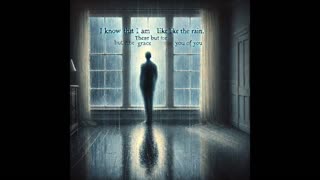 5:10
5:10
Current Affairs and world politics
5 months agoAmerican Party, Star Spangled Visionaries?
1252 -
 25:55
25:55
Welker Farms
19 hours ago $0.93 earnedI'd Say We Make A Pretty Good Team Fix'n These Tractors
11.2K3 -
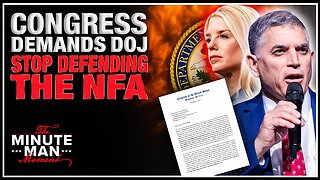 8:01
8:01
Gun Owners Of America
16 hours ago40+ Members of Congress Warn DOJ & ATF To Stop Defending the NFA!
14K3 -
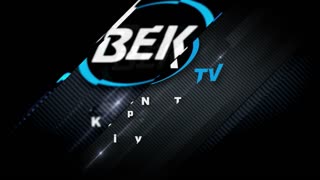 2:05:46
2:05:46
BEK TV
1 day agoTrent Loos in the Morning - 12/19/2025
12.2K -
 18:47
18:47
stateofdaniel
2 days agoJD Vance DESTROYS Twisted Vanity Fair HIT PIECE Against President Trump and Susie Wiles
65.9K23 -
 15:42
15:42
Actual Justice Warrior
1 day agoWealthy New Jersey School District Goes BROKE Overnight
25.1K23 -
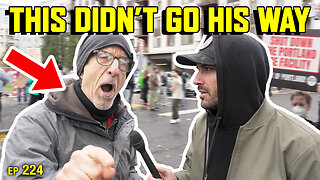 29:15
29:15
James Klüg
1 day agoI Crashed An ANTI-ICE March In Portland
40.3K37 -
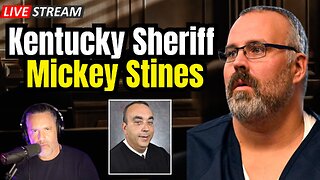 45:40
45:40
Surviving The Survivor: #BestGuests in True Crime
19 hours agoLIVE Hearing: Kentucky Sheriff Mickey Stines Back in Court; Murder of Judge Kevin Mullins
23.7K1 -
 1:17:00
1:17:00
Man in America
16 hours ago6G Is Coming — And Your Body Will Be Part of the AI-Run Network w/ Kim Bright
313K87 -
 1:32:57
1:32:57
Inverted World Live
15 hours agoAttack of the Radioactive Fog in L.A. | Ep. 156
98K17